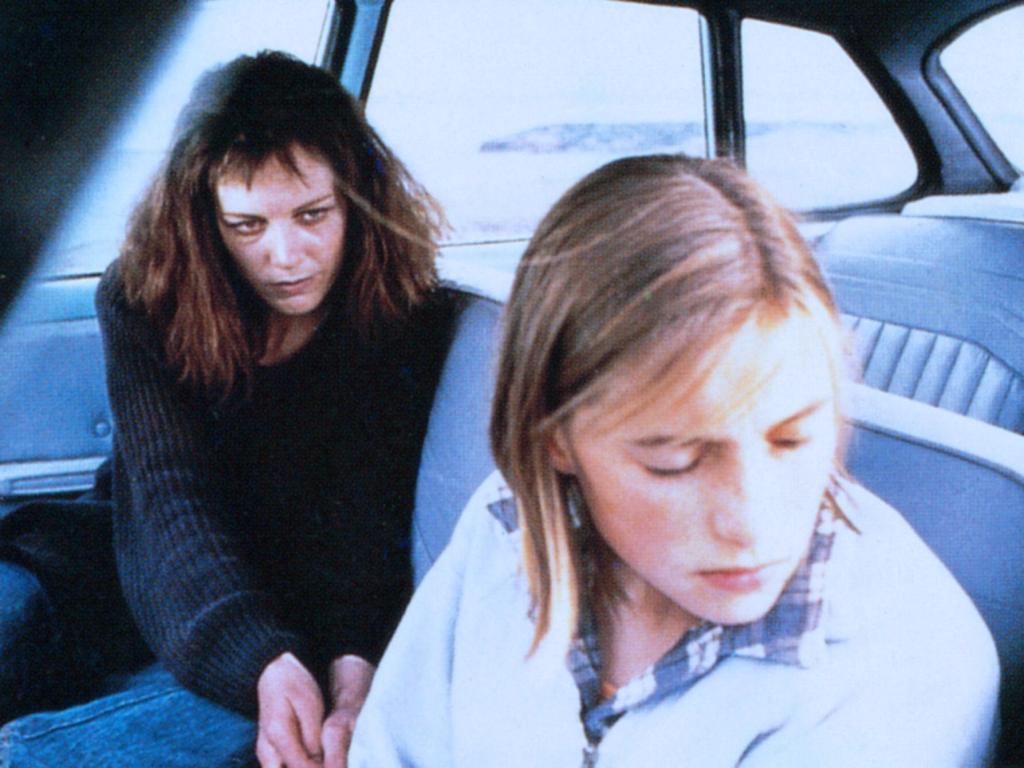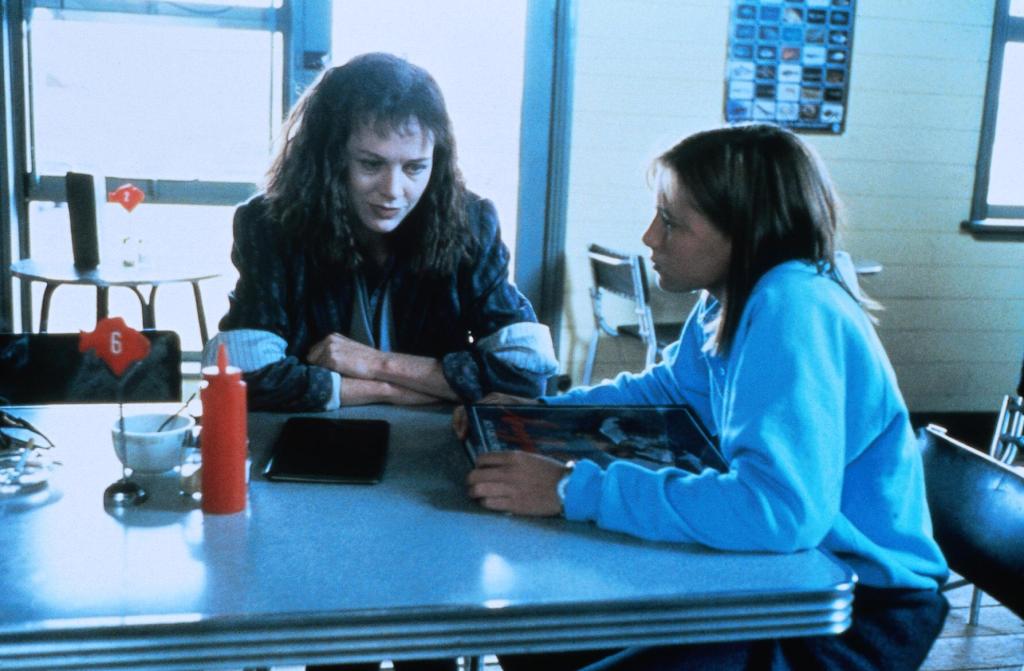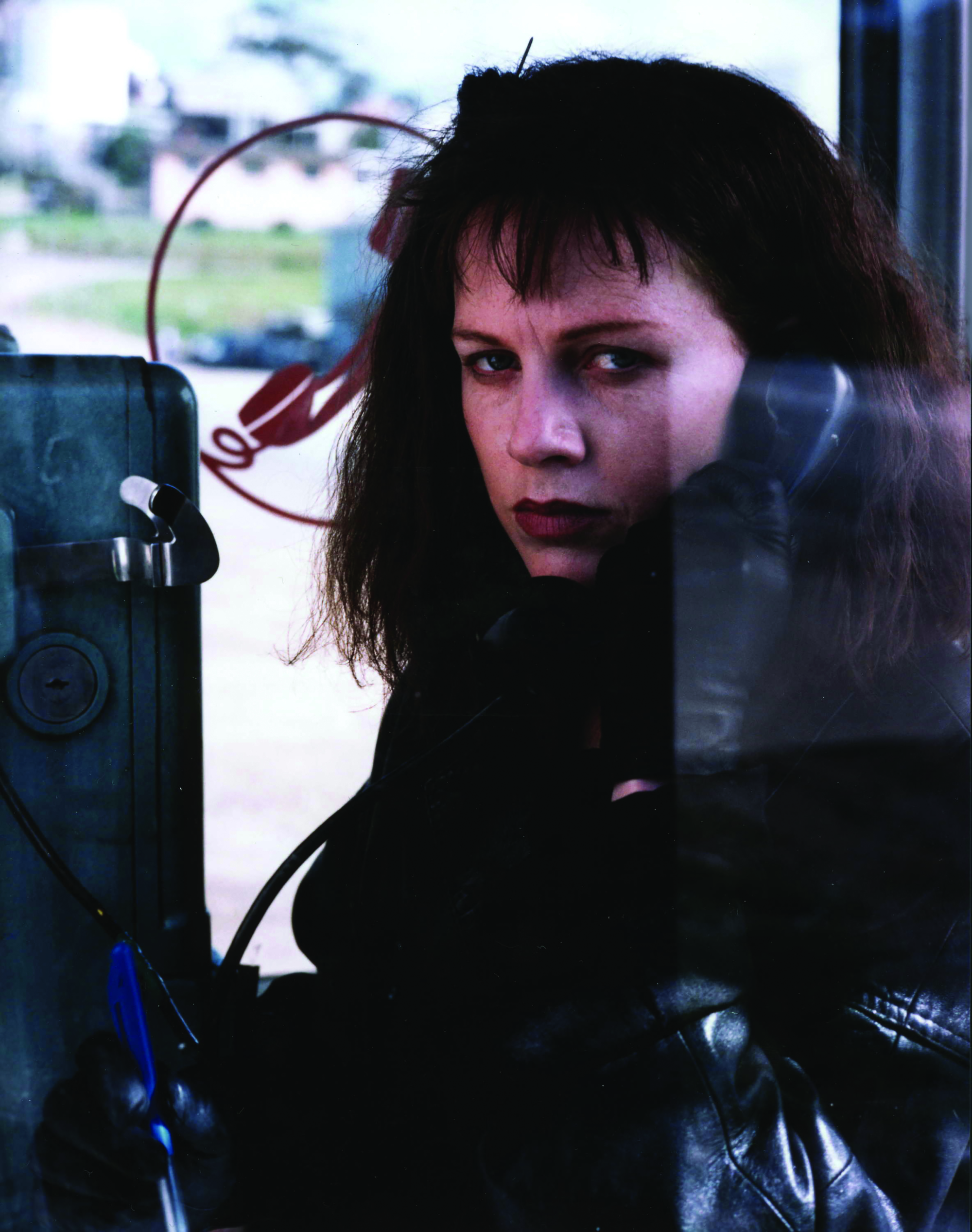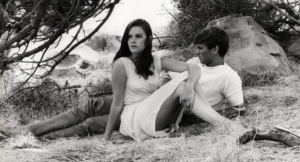Writing in 1988, film scholars Susan Dermody and Elizabeth Jacka suggested that the New Australian Cinema had, during that decade, begun experiencing its middle-aged spread: a period of feature films ‘mired in an endless reiteration’ that mirrored the supposed monotony and fatigue of cinema worldwide at that particular historical juncture.[1]Susan Dermody & Elizabeth Jacka, Anatomy of a National Cinema, The Screening of Australia, vol. 2,Currency Press, Sydney, 1988, p. 232. With the mainstream excesses of Mad Max Beyond Thunderdome (George Miller & George Ogilvie, 1985) and Crocodile Dundee (Peter Faiman, 1986) dominating the cinematic landscape, Dermody and Jacka saw salvation only in the handful of ‘eccentrics’ sporadically being served up by the local industry.
With the benefit of hindsight thirty years later, some of those understated oddities can rightly be considered lost classics. Films such as Albie Thoms’ Palm Beach (1980), John Duigan’s Winter of Our Dreams (1981), Phillip Noyce’s Heatwave (1982), Paul Cox’s Lonely Hearts (1982), Carl Schultz’s Goodbye Paradise (1983) and Ian Pringle’s Wrong World (1985) glimmer like diamonds sprinkled across a bland desert of period films and predictable excursions to the country’s vast and minacious outback. Perhaps the most sparkling gem of all is Gillian Armstrong’s High Tide, released in 1987. This is a film unique for, among other things, its outstanding cinematography – capturing the midwinter blues and greens of a southern New South Wales coastal town – and gritty realism; rarely before had a local picture so compellingly dramatised the everyday traumas of life at the ‘barely getting by’ end of the socio-economic spectrum. Above all, though, it is an Australian film that still stands out as one of the very few made by and about women.
Cinematic storytelling is not only about the power to invent characters and depict their lives; it also examines embedded and sometimes even unconscious prejudices within our society’s value and belief systems. In film, women are rarely represented as autonomous beings. High Tide, however, is an aesthetic and imaginative triumph that offers viewers three complex female characters – a grandmother, a mother and a daughter – each of whom possesses an individuality that exceeds her respective familial role. In fact, the notoriously demanding New Yorker film critic Pauline Kael was quick to acknowledge both the quality of Armstrong’s film and its potential as a feminist cinematic outlier:
A great many young women are likely to feel that this is the movie they’ve wanted to make. It’s a woman’s picture in the way that Stella Dallas [King Vidor, 1937] was – it’s about a mother-daughter bond. But it’s also a woman’s picture in a new way.[2]Pauline Kael, 5001 Nights at the Movies, Marion Boyars, New York & London, 1993 [1982], p. 333, emphasis added.

For Kael, much of the power of High Tide could be attributed to Judy Davis’ astonishing performance as Lilli, which placed ‘a woman’s fluid, not fully articulated emotions right onto the screen’.[3]ibid. Certainly, early on in the film, Lilli’s unstable livelihood as a backup singer for a troupe led by an Elvis impersonator – travelling from town to town, appearing in an array of banal clubs and pubs – already establishes her lack of solidity.
Armstrong has since revealed that the film’s main theme is restlessness, expressed in part by ‘moving the camera, tracking in and out, and low on the roads and rocks’.[4]Gillian Armstrong, commentary, High Tide, DVD, Umbrella Entertainment, 2010. Such drifting is elicited through fast tracking shots that transform ocean blues, meadow greens, and earthy browns and greys into fluctuating images. High Tide’s nomadic, fleeting cinematic style parallels its central mother–daughter relationship, which is simultaneously fragmented and deeply rooted. Such a paradox underpins the conflicting emotions and desires that permeate the film.
This sense of drifting is likewise evident in Lilli’s shifting moods, which express an emotional and psychological restlessness. After she is discarded from the band, a broken-down car traps her in a small town that, unbeknown to her, is also home to her daughter. Ally, played with remarkable sensitivity by a teenage Claudia Karvan, lives with Lilli’s former mother-in-law, Bet (Jan Adele), in a dreary caravan park that has as its only redeeming feature a stunning beachside setting. Stranded in this austere place, a drunk and miserable Lilli inevitably crosses paths with Ally, initially unaware that she is her child; it is only after seeing her with Bet that Lilli pieces things together. That this ‘meeting’ takes place in the caravan park – where the homes are not earth-anchored but mobile – alludes once more to the theme of drifting.

In a 1991 Metro article, Stephen Crofts suggested that High Tide’s use of the trope of movement is comparable to how it manifests in road movies. Yet, ultimately, he decided that Armstrong’s film is
more melodrama than road movie; for the road movie’s open, aleatory structure usually provides no more than a narrative launching-pad for such family ties as centrally animate this film.[5]Stephen Crofts, ‘Genre, Style and Address in High Tide’, Metro, no. 88, Summer 1991/1992, p. 19.
The practical and symbolic power of the road as a path between towns or homes, or towards a better life, has buttressed many iconic films both international (for example, Easy Rider, Dennis Hopper, 1969; Paris, Texas, Wim Wenders, 1984; and Thelma & Louise, Ridley Scott, 1991) and Australian (such as In Search of Anna, Esben Storm, 1978; and Kiss or Kill, Bill Bennett, 1997). George Miller’s Mad Max franchise (1979–2015) even depicts the road as a dystopian, claustrophobic realm. But in High Tide – which, beyond having women in key creative and acting roles, is unusual for exemplifying the unconventional category of the static road movie – lives are stalled and the road ultimately takes characters nowhere beyond themselves, evoking life’s tension between motion and stagnation. In a rare moment of honesty, Lilli reveals the enclosing logic of her self-deception to Bet: ‘I’ve always thought that I lived a kind of a … adventurous, brave kind of life. But I haven’t really. I’ve been a coward.’ Such a confession does not lead to reconciliation, however; like a spinning wheel, she cannot move past the disappointments that have defined her life.
In many ways, Lilli is an adult child, having foregone the responsibilities that come with maturity – and, in light of this, High Tide also bears some characteristics of the coming-of-age film. Once Lilli learns that the young girl she has befriended is, in fact, her child, we see her character slowly transform: her dereliction of duty towards Ally becomes a source of great anguish, and, while the profundity of this discovery initially compels Lilli to run away once more, this realisation does promise to break her habit of fleeing.

High Tide’s beachside setting strengthens the coming-of-age theme – the beach’s role as a backdrop for the classic antipodean bildungsroman is typified by local films such as Puberty Blues (Bruce Beresford, 1981). But Armstrong disrupts conventional representations of the Australian coast as warm, inviting and conducive to growth. The film’s cool colour schemes and windblown beaches paint a landscape more in keeping with Cornwall or A Coruña: matching Davis’ pale skin and her dark clothing and lipstick, High Tide’ssouthern Australian winter coastline is bathed in austerity. This bleak environment reflects the isolation of the film’s three female protagonists, each, in her own way, a lonely figure struggling against harsh physical and psychological conditions. As with the road, the idea (and ideal) of the beach as a place of freedom is overturned. The dark blue water looks like it will numb the body rather than heal or purify it. The vast sea and sand, cliffs and grass, do not offer a means of escape or solace; instead, they embody another dead end. The coastal road constantly seems to turn in on itself; characters ‘hit the road’ only to end up back where they began.
This circular movement parallels Lilli’s vacillation between embracing and denying her daughter. Again fulfilling the impetus for movement at the heart of the road movie, Lilli drives up north on a trip with her lover Mick (played by Davis’ real-life husband, Colin Friels); however, running away proves futile after she confides to him that Ally is her daughter. Lilli’s vulnerable mental state is poignantly depicted in a scene in which, after showering, she wears a simple singlet and towel; her petite frame is exposed, but the camera remains focused on her face – a complex landscape of emotions and memories. Lilli cannot let go of Ally; it is her child, not Mick, who is her true love. Once more, Lilli runs – but this time, she does so back to Ally.
Ally’s discovery of the truth happens accidentally, much like her mother’s. Some time after he is abandoned by Lilli, Mick – unaware that she has kept her true identity secret from Ally – discloses their biological connection to the teenager. The shock of this initiates more running, except this time Ally is impelled to search for her mother. The camera tracks Ally’s movements as she frantically searches for Lilli, checking her trailer and then heading towards the sea. The setting for their confrontation, sharp blue-green hues washing up against a long line of sand, provides no comfort: each character struggles with the truth as a swimmer struggles against the ocean’s might. Ally finds Lilli playing with a dog on the beach, a familiar leisure activity disrupted by a daughter’s urgent desire to know the truth. Utterly unprepared to embrace her motherhood, Lilli immediately responds with a lie. A close-up of Lilli’s expression reveals her suffering, and the truth of their relationship is inscribed on her face, prompting Ally to say, ‘My mother is dead.’ The affective saxophone music crescendoes as the camera, uncharacteristically stationary, records Ally running away. Like the relentless ebb and flow of the tides, waves of emotion propel characters towards and away from one another in an unceasing cycle of attraction and repulsion.

In another key moment of revelation, Lilli tries to explain why she deserted Ally, exposing her raw grief as a mother. She says she could not love her daughter because, at the time, she was mourning the death of her husband; again, the film shows us undulating waves of emotion gushing forth and receding. Yet, aligning with its designation as a static road movie, High Tide reveals how grief arrests afflicted individuals in a psychological state of stasis. Ally yearns for her dead father. Bet grieves for her son, although we really only see this projected as anger towards Lilli. And, now, Lilli mourns not just for her departed husband but also for her long-lost daughter. Indeed, consistent with the film’s theme of restless circularity, Lilli grieves most for Ally after they have reconnected: she sees a teenager on the cusp of womanhood who looks like and has the mannerisms of her father. The chaos of grief, intermingled with maternal wonder – of pain mixed with pride – encloses Lilli within a loop of conflicting emotions.
Arguably, then, the road in High Tide is not simply a ‘launching-pad’ for melodrama, as Crofts has described it, since it continually operates as a crucial site for decision-making. It is on the road that Lilli is confronted with the culminating dilemma of whether to abandon or to embrace her daughter. This is dramatised in the film’s final scene, in which Lilli is poised to drive away from a highway service station while Ally waits for her in the nearby cafeteria. Her quandary is excruciating as she sits in her car, deciding whether to run or to stay. Armstrong’s audio commentary on the film reveals that, at this moment, a typist shouted out against the former conclusion, and she hoped that audiences would react in the same way.[6]Armstrong, op. cit. In the final tracking shot, the camera adopts Lilli’s point of view as she moves towards her daughter in what becomes a rare moment of tenderness in the film.
High Tide is a largely unrecognised masterpiece, a crucial film emblazoning across the screen the complex shades and dimensions of womanhood. Davis’ and Karvan’s performances are astonishing in how they encapsulate a deep emotional and psychological existence that so often in cinema – an artform still overwhelmingly dominated by men – is devoted to male characters and their stories. It is difficult to name another film that so intelligently depicts women’s experiences unmoored from their domestic or sexual identities. Yet what Armstrong has created isn’t just a ‘woman’s picture’ – it is a unique piece of cinema that crosses many genres, overturns filmic conventions and, more profoundly, disrupts gender stereotypes. It is now three decades since High Tide’s release, but – like the other major Australian coming-of-age film of that year, John Duigan’s The Year My Voice Broke – it has hardly aged. Perhaps High Tide’s freshness can be attributed to its unconventional wisdom concerning the movements we make in thought and action that ultimately encircle us. Our roving and running begin and end with ourselves: a precarious origin that still remains mysterious.
Endnotes
| 1 | Susan Dermody & Elizabeth Jacka, Anatomy of a National Cinema, The Screening of Australia, vol. 2,Currency Press, Sydney, 1988, p. 232. |
|---|---|
| 2 | Pauline Kael, 5001 Nights at the Movies, Marion Boyars, New York & London, 1993 [1982], p. 333, emphasis added. |
| 3 | ibid. |
| 4 | Gillian Armstrong, commentary, High Tide, DVD, Umbrella Entertainment, 2010. |
| 5 | Stephen Crofts, ‘Genre, Style and Address in High Tide’, Metro, no. 88, Summer 1991/1992, p. 19. |
| 6 | Armstrong, op. cit. |





